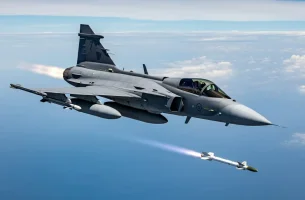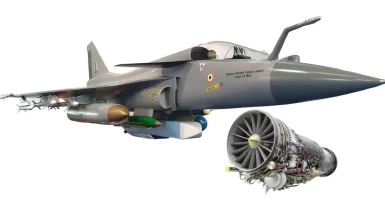- Views: 5K
- Replies: 48

Bengaluru, India – Swedish defence giant Saab has thrown its hat into the ring for the Indian Air Force's (IAF) Multi-Role Fighter Aircraft (MRFA) deal, offering its Gripen E/F fighter jet with a compelling proposition: delivery of the first indigenously-built aircraft within three years and complete technology transfer. This comes as the IAF looks to procure 114 new fighter jets under the 'Make in India' initiative, a contract estimated to be worth $20 billion.
Saab is emphasizing its commitment to technology transfer and local production. Kent-Ake Molin, Saab's Campaign Director and Head of Gripen for India Programme, stated, "We foresee that we can set up full-scale production in India, which will include everything; not just airframe, but also systems and software. We've a plan to rapidly indigenise the platform." He further highlighted ongoing discussions with Indian private sector partners to support this ambitious goal.
The Gripen E/F is competing against formidable rivals such as the Dassault Rafale, Boeing F/A-18 Super Hornet, Lockheed Martin F-21, MiG-35, and Eurofighter Typhoon. The IAF's requirements mandate significant technology transfer and the establishment of manufacturing lines in India, aiming to boost the country's domestic defence industry.
The Gripen E/F has also seen export success with Brazil and Thailand, which could further bolster its appeal to the IAF.
Saab aims to build a complete ecosystem around the Gripen in India, leveraging its experience from responding to the 2018 RFI and subsequent engagements with the IAF. Molin emphasized the company's readiness to deliver aircraft swiftly, supported by Indian partners, within the three-year timeframe.
Saab has been actively engaging with Indian defence companies like the Adani Group to explore potential partnerships for Gripen production in India.
While some components, like the engine, are sourced from global Original Equipment Manufacturers (OEMs), Saab highlighted the indigenous nature of the Gripen's avionics, software, mission computers, and sensor fusion capabilities. Molin stressed Saab's internal expertise in radar, electronic warfare systems, and weapon systems, emphasizing the potential for integrating Indian-made equipment onto the Gripen platform.
The Gripen E/F boasts advanced features like AI integration for enhanced pilot decision-making, network-enabled capabilities for seamless interoperability with other platforms, and a commitment to periodic software upgrades to ensure the aircraft remains at the cutting edge of technology.
This aggressive bid by Saab, with its focus on technology transfer and rapid delivery, adds another layer of complexity to India's high-stakes MRFA competition. The IAF's decision will have significant implications for the future of India's air power and its domestic defence industry.



